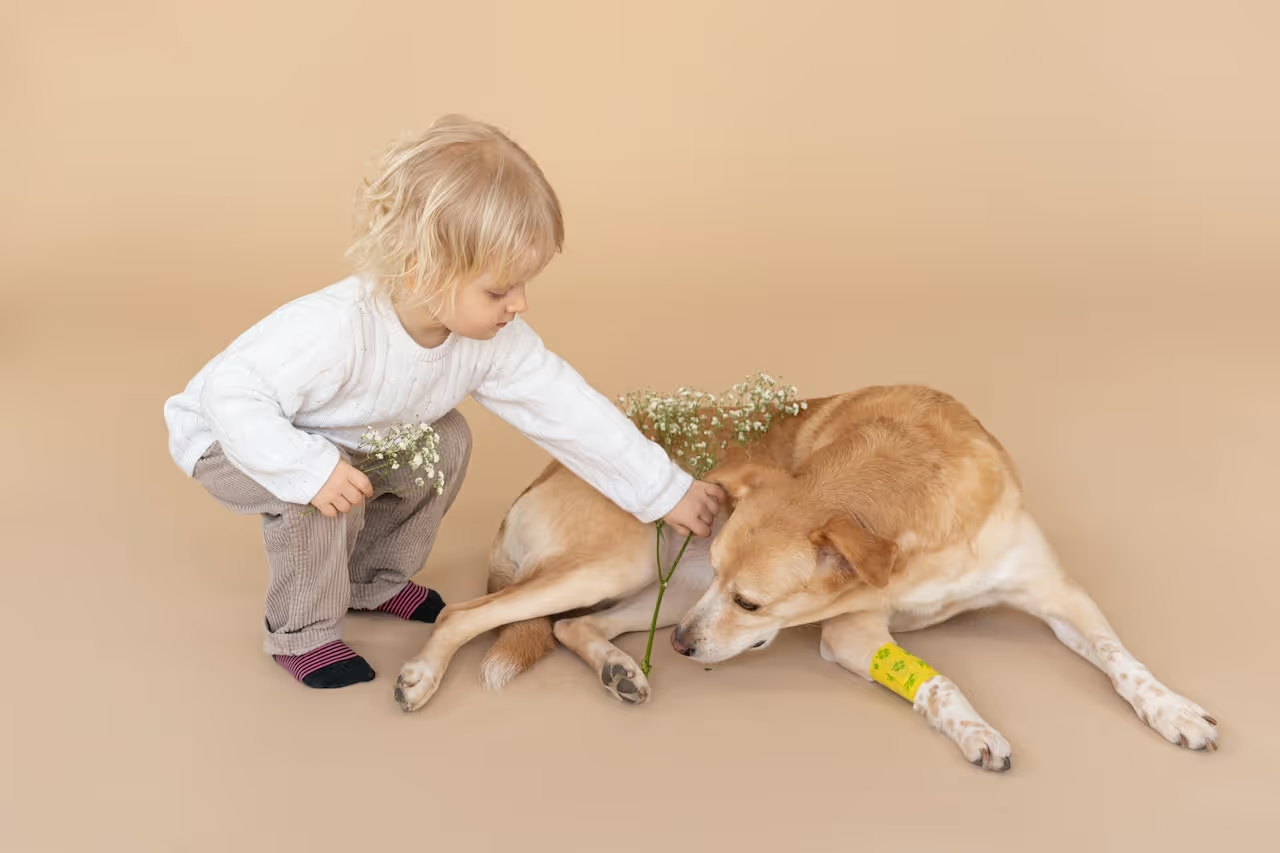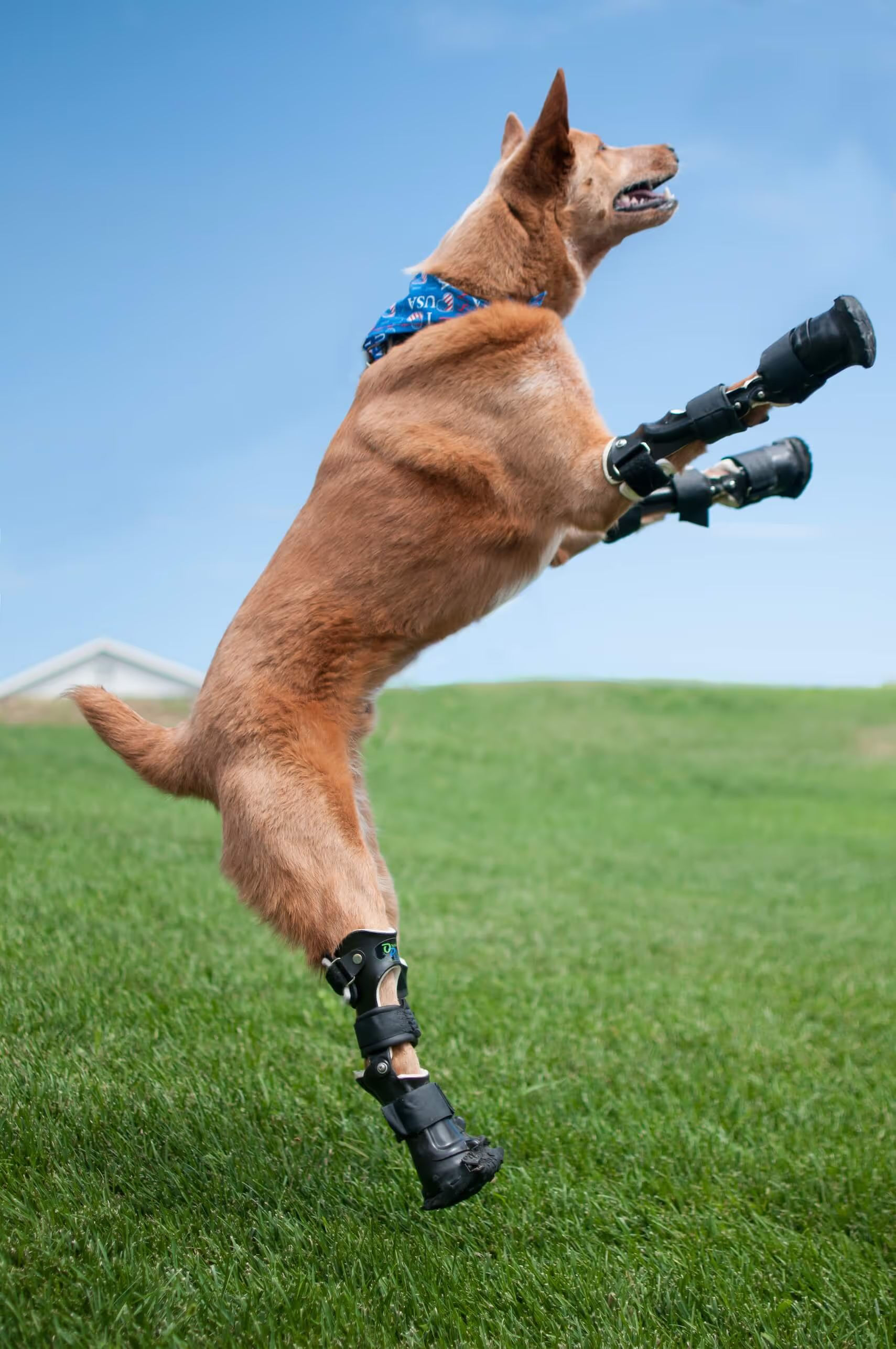CCL Dog Braces – What You Need to Know About Cruciate Injuries & How to Support Your Pet with a Brace

Playing and exercising with a dog companion can be vital to the bond between animals and humans. It’s also essential to your dog's exercise and weight management plan. Unfortunately, leg, hip, and knee injuries can often sideline a pup, possibly resulting in surgery or a lengthy rehabilitation process.
The ideal knee or cranial cruciate ligament brace can allow a dog to heal faster from an injury. Today, we’ll look at examples of the best dog knee brace for a torn CCL and how they can effectively get your furry friends back on track.
CrCL Injuries in Dogs - What is it and How is it Treated?
The CCL, or cranial cruciate ligament, is a connecting tissue between the thigh and shin bone. These two bones meet at the knees, and the CCL stabilizes this area's range of motion. As you can imagine, this area takes on plenty of punishment. Too much strain or extension can cause damage to the CCL, leading to pain, discomfort, restriction of movement, and even surgery to repair it.
For dogs, these same rules apply, with a few additional concerns. Because of the shape and angle of a dog’s hind leg, the CCL is always a load-bearing ligament, whether running, walking, or standing. The CCL is a much more vital part of a dog’s movements.
Veterinary care is challenging because our patients can't use words to describe their feelings. It’s common to miss the early stages of an injury or the warning signs of problems. Being in tune with your dog is vital for understanding their feelings.
Many dogs agitate more minor injuries into larger ones simply because they don’t want to stop being active. When a dog develops a CCL injury, it is often a culmination of previously undiagnosed or untreated injuries to the knee area.
Running and jumping too hard or fast, changing directions quickly, or simply feeling the effects of age can contribute to dog CCL injuries. Surgery isn't the most viable option for a dog like Ace because sedation can be risky. Ace and other dogs like him who have developed a CrCL injury and have additional health concerns can benefit most from using a high-quality brace.
Is it Possible for a Dog to Heal From a CCL Tear Without Surgery?
The success rate of conservative management is unclear, and recovery time is likely to be prolonged. In historical studies from 1972 and 1984 (Pond & Campbell and Vasseur,) the dogs were treated with cage rest for 3 to 8 weeks and painkillers. 90% of small breed dogs had a good outcome (no detectable lameness reported by owner) vs. 78% of large breed dogs. Recovery time is unclear. The newer 1984 study found 85% of small breed dogs had a good outcome (as assessed by veterinarians) and only 19% of large breed dogs.
Alternatives to CCL Surgery
Although significant CCL injuries may require surgery, there are situations where a less severe injury can be non-surgically treated. Patients with severe tears who are not candidates for surgery can still be candidates for a lifelong orthosis.
5 Ways For a Dog to Heal from a CCL Tear Without Surgery
Weight Control: Refrain from Putting Excessive Strain on Knees
A weight-loss plan may be beneficial if weight contributes to CCL or knee problems. Losing weight reduces the strain on the knees and joints, which is essential as a preventative measure to aid healing.
Jumping and Stair Climbing: Limit the Amount of Physical Activity
One of the most common pieces of advice for recovering from an injury is to rest. This can be a bit more difficult for dogs, as some of our furry friends are naturally rambunctious and energetic. Trying to curtail an energetic pup can be a challenge.
Sometimes, it may require physically restraining the dog with a leash or harness. Crating a patient is also a reasonable answer for controlling too much movement.
Knee Brace: Provides Stability While They Are Healing
If a CCL injury is reasonably mild or even more severe, it is possible to manage the instability and pains with a brace.
Medications: As Per Recommended Dose
Some dogs may require medication during the healing process. Pain management or a sedative are all possibilities your vet may recommend.
Joint Relief Supplements: Help with Pain and Swelling
The dog can also begin a regimen of supplements to help the regeneration process. Additionally, some dogs may benefit from alternative treatments such as water therapy, massage, acupuncture, or other sports-related rehabilitation methods. The severity of the CrCL injury will determine which strategies are viable.
What Happens to a Dog with an Untreated Torn CCL?
Some dogs are just natural warrior pups. They play through the pain, give 100%, and never let on that anything is bothering them. These are often the dogs who will exacerbate a minor problem into something much more significant.
Older dogs are also prone to developing damage to their CCLs. The ligaments can deteriorate over time and eventually become too torn or stretched to support the knee and bones properly.
If these dogs’ injuries or others like them go untreated, they lead to further injury and pain. Dogs with CCL problems can also develop scar tissue, making joints harder to flex, further reducing movement. Arthritic conditions will also worsen, which can keep a dog sidelined indefinitely.
Why Wearing a Brace Can Help Prevent Dog Knee Problems
Fitting your dog for a brace can be beneficial for a dog healing from an injury and an effective preventative treatment to avoid injuries. A brace adds support and stabilization, especially if the CCL or other ligaments have become damaged. The added stabilization reduces the wear and tear the ligaments undergo during physical activity.
How to Choose the Best Knee Brace for Your Dog Based on Their Needs?
With modern medical technology, custom braces can be designed to fit each unique dog and its legs perfectly. Custom braces can be constructed of different materials, are often waterproof, and are worn in various settings and conditions.
Custom braces are often a good choice for dogs who will wear a brace for an extended amount of time. Customization ensures the fit is snug and form-fitting, so it doesn’t chafe or cause other problems. Dogs recovering from surgery or older dogs looking to extend their active years are strong candidates for custom-made equipment.
What is the Best Dog Knee Brace for a Torn CCL?
As mentioned earlier, a torn CCL requiring surgery can take some time to heal or become flexible enough for movement and use. Adding a brace makes your dog more likely to recover faster and with less pain or discomfort. A custom-fitted brace made of a combination of hard-molded materials and neoprene or other performance fabrics offers the best of both worlds for a recovering pup.
Re-Introduce Pain-Free Playtime to Your Dog with OrthoPets!
Keeping our pets healthy is integral to the relationship we share with them. We offer shelter, food, and medical support to improve their lives, and they enhance our lives.
So, seeing our pets in pain signals the need for action and care. We want the best for them since they so freely give their love to us.
At OrthoPets, we share those same sentiments, not only about our own pets but for all pets and pet parents worldwide. Our mission is simple: provide life-changing care through veterinary orthotics and prosthetics.
Contact us through our website to learn more about all the innovative and inventive products and services we provide. While you’re there, review the success stories featured in our blog.
Our success is measured in the progress of the many dogs (and other animals) who have been given a new lease on life through medical technology. Let’s start writing your success story today!

